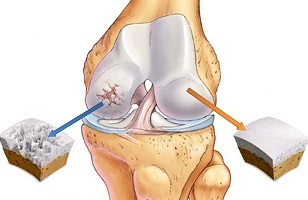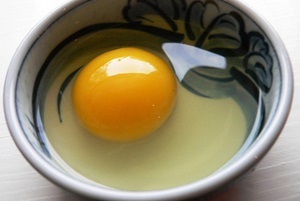
Arthrosis of the knee joint is one of the most common diseases of the joints and, in terms of the severity of the disease, occupies the second place after coxarthrosis.
According to the latest research, the disease occurs in one in five adults on Earth. In the material, we will tell you what the symptoms of this disease are and how to treat it properly to avoid complications.
Reasons for the appearance
Every day, a person's knee joints are subject to stress, as when walking, playing sports supports the entire weight of the body. Over time, the cartilaginous tissue wears out, which leads to changes in the joints. It is for this reason that older people can suffer from knee joint osteoarthritis.
In addition, there is a risk group, which includes people:
- overweight;
- suffering from osteoporosis;
- with hereditary disorders;
- elderly people;
- working on specific specialties with a large number of hours;
- has metabolic disorders;
- with deficiency of microelements in the body;
- with spinal injuries;
- athletes.
It must be remembered that this disease develops very slowly and it is very important to see a doctor in time if the main symptoms are found.
This will avoid possible complications, such as deficiencies in the future.
Symptoms of knee arthrosis
To locate the disease, just pay attention to the symptoms - they are quite common in osteoarthritis. That includes:

- Pain or discomfort after sleeping (or when trying to get up after sitting for a long time).
- Pain in the knees when standing for a long time.
- When climbing stairs - burning sensation.
- Night pain or discomfort after exercise.
- Feeling weak and “bent” in the lower limbs.
One of the most important symptoms is pain and stinging in the knee area.
At the same time, the disease itself does not appear "suddenly": such sensations can increase for months or years, and at first they will only bother with increased loads, then the pain will be felt even at rest.
But it is important to remember that the symptoms vary depending on the degree of the disease.
Let's take a closer look at each option.
grade I
Arthrosis of this degree is almost asymptomatic, but there are a number of factors that are characteristic of this stage of the disease:
- feeling tired in the limbs;
- decreased mobility, which usually occurs after sleep.
If there is pain, it is almost invisible. It is very difficult to diagnose the disease at this stage, so you cannot do without an X-ray: arthrosis will manifest itself as a small gap on the surface of tissues and bones.
grade II
At this stage, the symptoms are more intense. The pain can arise even with a light load on the legs and, over time, these sensations can arise with a simple movement. The discomfort only disappears after a long rest.
Additionally, symptoms like:
- grinds when moving;
- changes in the bones of the joint; synovitis;
- inability to bend the leg.
grade III
A characteristic of this degree is intense pain, which no longer depends on the load: the joints can disturb even at night in the absence of any movement.
Mobility is also impaired - a person cannot bend the leg at the knee. Sensitivity to climate can also be observed.
Diagnostics and additional treatment principles

After listening to the doctor, he will examine the appearance of the knee, assess your mobility. Then, the patient will be referred to an X-ray, and several images can be taken during the treatment period, which will allow to assess the dynamics of the development of arthrosis. In some cases, MRI or tomography is prescribed.
If research is needed to correctly identify the root cause of osteoarthritis and separate it from other diseases with similar symptoms.
Treatment usually includes the following:
- Medical therapy.
- Massage and manual therapy.
- Surgical intervention.
- Exercise therapy and other methods of rehabilitation therapy.
The main goals of treatment are as follows:
- elimination of pain;
- restoration of the ligamentous apparatus and destroyed cartilage;
- increased range of motion in the joint.
Massage procedures, physiotherapy and even proper nutrition are also important. If you see a doctor too late or none of the above methods will help you, an operation will be prescribed: the installation of an endoprosthesis.
Arthrosis treatment - choice of methods and means
At the moment, there are groups of drugs prescribed for the treatment of early-stage osteoarthritis:
- NSAIDs - non-steroidal anti-inflammatory drugs;
- chondroprotectors;
- medicated ointments;
- compression tools.
NSAIDs aim to eliminate pain and inflammation. And it is only after reducing the pain syndrome that additional treatment can begin.
If the use of non-steroidal drugs has not worked, especially if the disease just progresses, doctors usually prescribe hormonal drugs.
However, it is worth remembering that due to a series of side effects, such drugs are prescribed only during the period of the disease - if there is an accumulation of fluid within the joint. The solution is injected no more than 1 time in 10 days.
The only group of agents that directly affect the cause of arthrosis are chondroprotectors. They are especially effective in the early stages.
Also in the early stages, hyaluronic acid, which is injected into the joint, is very effective. This procedure is not the cheapest, but it does help to abrasion the cartilaginous surface.
When arthrosis is detected, ointments are also prescribed - they also reduce the sensation of pain and remove inflammation.
How traditional medicine can help
It must be said immediately that you should not use only the methods of traditional medicine - they should be used only as a complement to medical treatment.
Let's take a look at some things that can help with knee arthrosis:
Dandelion flowers
You only need to eat 5 dandelion flowers a day, make sure to rinse them with boiled water. You can also make tinctures: take 5 bottles of dark glass, fill 50% with flowers, fill the container with triple colony to the neck. Insist for a month, then clean your knees with the resulting infusion.
Faceting

This is a compound that needs to be rubbed into the knee joint regularly.
To make this composition is very simple: take the egg yolk, mix it with 1 tbsp. me. turpentine, add 1 tsp. Apple vinegar. All ingredients must be mixed and left overnight.
Lubricate your knees every night and cover with a woolen scarf.
Furthermore, it is very important to wash the applied mixture thoroughly in the morning. To relieve symptoms, you must use this method for 2 to 3 weeks.
Burdock
According to the folk effects, you need to place 3-4 large leaves of burdock on the sore knee and wrap it with a bandage. Repeat this manipulation for at least a week to relieve the pain. And to enhance the effect, it is necessary to lubricate the joints with cinquefoil oil.
Celandine Juice
Wet a piece of cloth with juice and place it on the affected knee. After an hour, brush with vegetable oil. Repeat the procedure for a week.
Root Harpagophytum
Take 2 tbsp. me. means, pour into a thermos, pour 1 liter of boiling water, leave for two hours. Take at least 3 warm glasses a day.
Choice of knee pads for arthrosis
Often, in case of osteoarthritis of the knee joint, it is recommended to use special knee pads, which reduce the sensation of discomfort and have a therapeutic effect. Typically, if you use them for a short period of time, you will see improvements like:
- the inflammatory process slows down;
- the swelling goes away;
- pain relief;
- decreases pressure in the joints;
- the work of the musculoskeletal system is stabilized.
It is very important to choose the right model that will be effective when used. To do this, let's first study what types of knee pads are:

- Open.Essential for those who feel pain after suffering some injury or mild pain.
- Elastic productswith reinforcements. This type of knee pads is most suitable for those who have pain when squatting, climbing or descending stairs. Knee pads
- openwith adjustable tension. These products are ideal after operation.
- Closed type- are used if the source of the pain is unclear, that is, it is not concentrated in any specific location. It allows to minimize stress in the joints.
- The magnetic appearanceof the knee pad is characterized by the presence of a special magnet, thanks to which there is a heating effect, improves blood circulation.
- Articulated.Considered a universal option. Used to minimize pain after injury, osteoarthritis.
In addition to the type, you must also take into account the material the knee pad is made of. Therefore, these items can be made from:
- Animal hair.These products heat up, absorb moisture, reduce inflammation and improve blood circulation in tissues.
- Polyester.Knee pads made of this artificial fabric are very comfortable, reliable, but they don't heat up and are very expensive.
- Cotton.Pleasant to use, waterproof. It is true that there are also disadvantages: lack of elasticity and weakness of use.
- Nylon.The knee pads made of this material are considered to be the most durable and adapt perfectly to the body. But there is also a minus sign - this is an artificial material.
- Neoprene.Despite being a man-made fabric, this material is elastic and has a heating effect. There is also a drawback - wearing these knee pads can cause allergies.
But it is important not only to choose the right knee pads, but also to use them. Doctors provide several important recommendations to be followed:
- you should not use them for more than three hours a day;
- the duration of use depends on the degree of arthrosis - the doctor will inform you about this in more detail;
- if you are allergic, you need to urgently consult a doctor who will prescribe another dressing;
- it is impossible for the agent to strongly compress the joints;
- wash the knee pads by hand, the water temperature should not exceed +40 degrees.
In conclusion, it must be said that you should not neglect a healthy lifestyle - in this case, the body will function as it should. If you experience joint pain, see a doctor urgently to make the correct diagnosis.

























